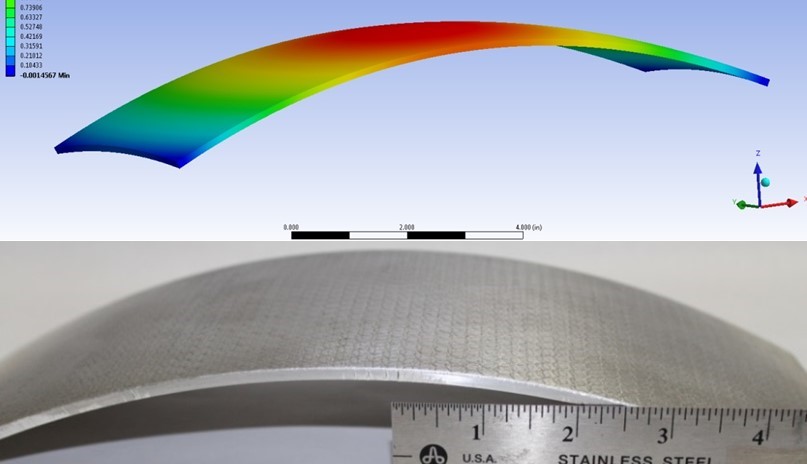LSPT Demonstrating Laser Peen Forming for American Shipbuilders
LSP Technologies is set to host a major event highlighting development work with the National Shipbuilding Research Program.
Posted: February 21, 2018
By:
LSP Technologies is set to host a major event highlighting development work with the National Shipbuilding Research Program.
This Thursday, February 22nd, LSP Technologies will host guests from around the country to demonstrate Laser Peening applications for the maritime industry. The event, “Foundational Technology for Scanning and Laser Peening in Shipyards” highlights LSPT’s work with the National Shipbuilding Research Program (NSRP), developing Laser Peening applications for naval vessel construction and sustainment.
Laser Peening is a powerful metal improvement method for component life extension. The process uses high-energy laser pulses to generate deep compressive residual stresses which inhibit cracking and prevent failures. The aerospace industry employs Laser Peening to protect high-value aircraft components, and now the maritime industry is exploring Laser Peening applications to facilitate shipbuilding and repair.
Laser Peen Forming

Two main benefits of Laser Peen Forming:
- Laser Peening produces stress distributions that can be modeled using analytical tools. This allows engineers to simulate Laser Peening process effects and design applications that produce desired curvatures or shapes.
- Laser Peening improves metal fatigue strength and damage tolerance, protecting components from fatigue cracking, corrosion, and premature failure.
With the aid of 3D scanning and modeling techniques, Laser Peening can shape metal parts to precise geometric configurations while improving the material’s resistance to cracking and corrosion.
Laser Peening for Shipbuilding

Laser Peening offers shipbuilders the cost-saving benefits of lifecycle extension, along with improved methods for component manufacture and repair. The NSRP and associated shipyards are targeting Laser Peen Forming to shape compound-curvature structures for more efficient vessel construction. The goal is to replace current brute-force assembly methods (wedges, winches, and hydraulics) with Laser Peen Forming to more efficiently fit and weld heavy plates.
Laser Peened maritime parts are particularly advantageous due to their enhanced protection against stress corrosion cracking (SCC). Naval vessels endure prolonged exposure to the corrosive effects of salt water and air. Laser Peened components retain a deep layer of compressive residual stress which mitigates much of the tensile strain associated with stress corrosion cracking.
Foundational Technology on Display
This week’s event highlights ongoing work to develop Laser Peening applications for shipbuilding and repair. The focus of this foundational NSRP program is integrating 3D scanning capabilities with Laser Peening process modeling and application to form precise curvatures in popular shipbuilding metals.
The centerpiece of the demonstration is LSP Technologies’ powerful production laser peening equipment: The Procudo® 200 Laser Peening System. This high-repetition-rate system is engineered for fast, flexible, high-volume processing, along with integration directly into manufacturing facilities.
The long-term goal of this effort is to provide shipbuilders the tools to Laser Peen Form robust components within the shipyard environment.
Learn More about Laser Peening
Interested in Seeing More?
Tell us about your application, material, or failure mechanism and we will have one of our experts reach out to you. Our extensive library of research and years of experience gives us a unique advantage to apply a finite element analysis to help diagnose the best application for your situation.
